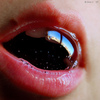The role of saliva in maintaining oral homeostasis
Article Abstract:
Saliva is a fluid consisting of various factors that protect against harmful microorganisms and irritants within the mouth. The protective effect of saliva is most evident due to its absence in xerostomia, dryness of the mouth caused by an abnormal reduction in the amount of saliva secreted. Saliva protects soft tissue such as the mucosal tissue lining the mouth from dryness, penetration, ulcer formation, and possible cancer-causing agents, and also enhances the repair of soft tissue after injury. An important function of saliva is to maintain the balance of microorganisms within the mouth by removal and wash-out of debris. Saliva also includes immune or natural defense mechanisms, non-immune mechanisms, and antibacterial, antiviral, and antifungal systems. Saliva is important in: maintaining a neutral pH, or level of hydrogen ions in the mouth that is neither acidic nor basic; controlling the pH of plaque, the gummy mass of microorganisms on tooth surfaces; and neutralizing any stomach acid regurgitated through the esophagus. The mechanisms whereby saliva maintains tooth integrity include: mechanical cleaning, carbohydrate clearance or removal; maturation or development of the tooth enamel; controlling the ions in plaque fluid; pellicle deposition, which is the attachment of a thin layer of salivary proteins to the tooth surface after cleaning; and preventing acid from diffusing to the tooth. In conclusion, saliva plays an important role in dental health. (Consumer Summary produced by Reliance Medical Information, Inc.)
Publication Name: Journal of the American Dental Association
Subject: Health
ISSN: 0002-8177
Year: 1989
User Contributions:
Comment about this article or add new information about this topic:
Calculus update: prevalence, pathogenicity and prevention
Article Abstract:
Many people have calculus deposits on their teeth which can be controlled with anti-calculus agents. Calculus is mineralized plaque. Research indicates that at least 80% of US adults between the ages of 18 and 65 have calculus deposits. Males are more prone to calculus formation than females and calculus increases with age. Calculus that forms above the gumline is covered by plaque and may inflame the gums, interfere with natural oral cleansing, and complicate oral hygiene. Calculus that forms below the gumline promotes periodontal disease that damages the tissues around the teeth. The first anti-calculus agents were designed to dissolve calculus deposits, prevent the attachment or formation of plaque, or limit plaque calcification. Beginning in the 1970s, researchers tried to alter the crystal growth of plaque to prevent its mineralization. Some dentrifices contain anti-calculus formulations that reduce calculus by 17% to 50%.
Publication Name: Journal of the American Dental Association
Subject: Health
ISSN: 0002-8177
Year: 1995
User Contributions:
Comment about this article or add new information about this topic:
The image of dentistry in contemporary culture
Article Abstract:
The image of dentistry and dentists has changed substantially throughout the 20th Century. Initially, dentists were portrayed as clowns or sadists whose primary function was to pull decayed teeth. In many cases, this was the only treatment for tooth disease. However, since the 1940's, the focus has changed to preventive dentistry. Consumers are urged to brush and floss regularly and there are a variety of esthetic techniques available. References to oral hygiene are found in films and literature. The image of the dentist has ranged from a bland, respectable person to a complex, realistic human being.
Publication Name: Journal of the American Dental Association
Subject: Health
ISSN: 0002-8177
Year: 1998
User Contributions:
Comment about this article or add new information about this topic:
- Abstracts: The effect of different diagnostic criteria on the prevalence of dementia. A reevaluation of the duration of survival after the onset of dementia
- Abstracts: The HIV epidemic and training in internal medicine: challenges and recommendations. Infections with Cryptococcus neoformans in the acquired immunodeficiency syndrome
- Abstracts: The HIV epidemic and training in internal medicine: challenges and recommendations. part 2 Sexual harassment in medical training
- Abstracts: The role of second-look surgery in the management of advanced germ cell malignancies. Peripheral primitive neuroectodermal tumor (peripheral neuroepithelioma) in children: a review of the St. Jude experience and controversies in diagnosis and management
- Abstracts: Amalgam hazards: an assessment of research. Salivary diagnosis: more than a lick and a promise. Changing dental images - from stone tablets to comic strips













